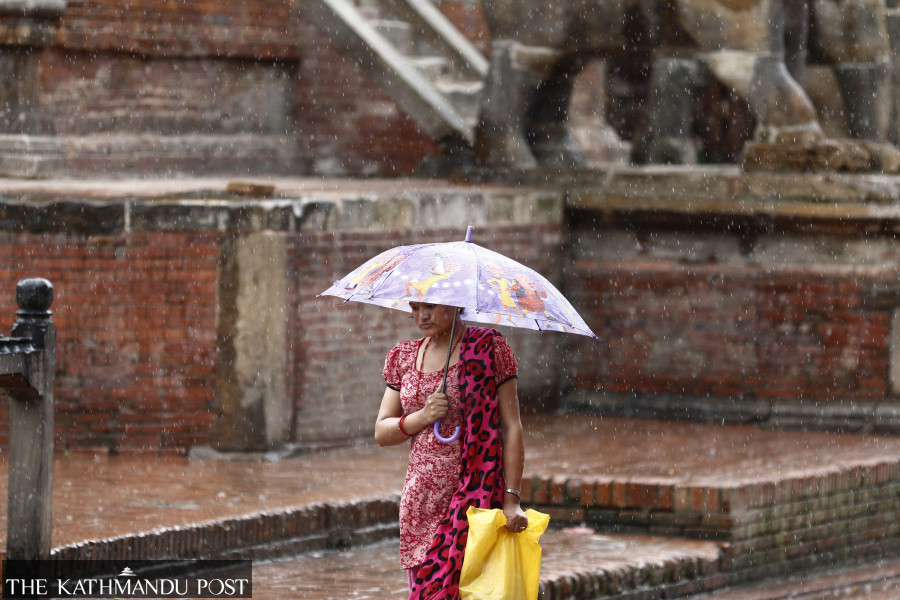Climate & Environment
Monsoon likely to be delayed this year
The monsoon season, which delivers around 80 percent of the country’s total annual rainfall, generally begins in Nepal on June 13.
Post Report
The monsoon is likely to be delayed by a few days this year, the Meteorological Forecasting Division of the Department of Hydrology and Meteorology said on Sunday.
“We cannot forecast the exact date of the monsoon arrival, but it will not start before the average date,” said Sanjiv Adhikari, a meteorologist at the division.
The monsoon season in Nepal generally begins on June 13 and ends on September 23. Last year, however, it entered the country eight days ahead of schedule.
Normally, after the arrival of monsoon, it takes one week for the clouds to spread across the country.
A normal monsoon, supported by the timely arrival of rains, translates into favourable conditions for agricultural production, mainly of paddy, and is further linked to the country’s overall economic growth.
The monsoon season, which delivers around 80 percent of the country’s total annual rainfall, generally lasts 105 days. But, in recent years, it has been taking more time to withdraw.
Meteorologists have forecast below-average rainfall in the upcoming rainy season. The department’s Climate Section, which forecast weather conditions on Thursday for four months (June 1 to September 30), said that most parts of the country are likely to experience an above-average maximum temperature due to the El Nino conditions, a climatic pattern that generally brings dry weather.
“There is a 35 to 55 percent chance of both conditions—below-average rainfall and above-average maximum temperature,” the department said.
Nepal is one of the world’s most vulnerable countries to the climate crisis and has witnessed extreme weather events over the past decade and a half.
Evidence indicates that the maximum temperature in Nepal is rising at a faster pace (0.056 degrees Celsius per year) than the global average (of 0.03 degrees Celsius per year).
Experts say extreme weather events—excessive rainfall in a short span of time, continuous rain for several days in the post-monsoon period, dry spells and droughts, below average precipitation and above normal temperature in winter—have become more frequent in Nepal in recent years.
Meanwhile, the Met office said that the local weather system and the westerly winds are causing rainfall in many places across the country every day.




 7.12°C Kathmandu
7.12°C Kathmandu










